Contents
Summary
Three weeks ago today, I twisted my ankle while running fast down hill on a trail near home. My ankle was mostly fine, though I suffered a similar injury in 1990 while running/racing downstairs and turned my ankle at the bottom of the steps. At that time I did not go to the doctor or get an X-Ray. But, it was mostly better after a couple weeks (just in time so that I was barely limping in my wedding ceremony). And I wasn’t running as regularly back then. I have known from decades of running (both in shoes and barefoot) that this injury had left my right ankle weaker than normal, which probably contributed to this re-injury.
I was also shooting video of my feet on my last run – where I twisted the ankle and broke my metatarsal), but unfortunately, just before I turned the ankle, I had changed angle of the camera to view the trail ahead ;-(
A sadly magical shot missed by that much!
Video
Post Injury, No Haste
After this recent injury, I walked very gently 1.5 miles home. The pain was extremely similar to the injury in 1990 (a nasty twist of the ankle while wearing shoes 24 years ago). Swelling about the same, but bruising was a bit more, probably due to the 1.5 mile walk home before resting, elevating, cooling the foot down (not with ice, better to use frozen peas or berries – ice is too extremely cold, and the cubes don’t conform as well with the shape of the foot), and compressing (R.I.C.E. – Rest, Ice, Compression, Elevation and/or Exercise – see Gallery below for examples). Keep in mind that the “Ice” and “Compression” should be for relatively short periods. Rest and Elevation can be for much longer periods – about as much as practical. Exercise of the injured area should wait until initial healing is mostly finished – otherwise, you’re just going to re-injure, again, and again, and again. In the meantime, exercise other (un-injured) areas of the body by tensing, relaxing, and stretching, and relaxing, and of course more relaxing.
Documentation of the Injury
I happened to be shooting video of my feet on my last run – where I twisted the ankle and broke my metatarsal), but unfortunately, just before I turned the ankle, I had changed angle of the camera to view the trail ahead ;-(
A sadly magical shot missed by that much!
X-Ray
This time, after a few days, I called my doctor, and got an X-Ray of my right foot. The doctor didn’t seem to think the ankle needed an X-Ray (no tenderness), and I agreed, it’s probably tendon or ligament damage that needs to heal there (and build strength after healing).
My fifth metatarsal was cracked, not displaced. There was a small heel spur, and a little bit of arthritis in the 1st metatarsal. At almost 59 years old, no surprises on the heel spur and arthritis.
Healing
It’s been three weeks, I’m walking 1 mile, 1 or 2 times most days with Report at PsychoHerman.com. A few days ago, Herman and I walked at least 2 miles. Some days, when my muscles are more tired and sore, I don’t walk as often or far. But still short outing mid-day with Herman to visit some neighbor cats and dogs hanging around outside our place.
Much of the soreness from walking is because I’m not relaxing as much as I should. it’s a bit difficult to take that “leap” when sudden changes in pressure on the foot hurt most.
My doctor had refereed me to the orthopedist group to get a cast or a boot. I suggested the boot, so I can remove it to wash, shower, etc.. My doctor agreed. But the ortho group told me not to call them until my doctor faxed the referral authorization – which has been done twice now. Then they said they would call me back when they received the authorization, and they never called me.
At two weeks since injuring my foot, and since my foot was healing well (Cathy and I have been on a 2-week mostly raw diet which is probably helping the process), and I believe the walking (very gently), which stresses the foot slightly (not to the point of pain) probably stimulates more healing than if the foot were completely immobilized. Also, this should help keep the muscles from atrophying too much (much like they do in rigid shoes). So I’m thinking I’m not going to worry much about seeing the orthopedist or getting the boot (though it might have been a useful prop in future presentations).
What to do Differently?
One of my neighbors asked an important question, “What would you have done to prevent this injury?”
The answer begins at least 24 years ago, when I twisted and sprained my ankle while racing down stairs at work. At the last step I tried to turn 90 degrees while I still had too much momentum and my ankle rolled over and was badly sprained, leaving it weakened, and also injuring my foot (I was wearing running shoes at the time).
What I would have done differently, would have been to not wear shoes while racing down those stairs, and especially not to turn so sharply at the bottom of those stairs. Both of these contributed to weakening my ankle and foot. The shoes especially, with their thick-ish sole increased the torque on the ankle when rolling.
That I could run fairly well (if I say so myself) since then, was more likely due to abandoning shoes for running shortly after that incident, except for twice in 1998, once on severe gravel trails, and again after running too much in too short of a time. But mostly exclusively barefoot since 1990 – and probably the foot had never healed properly all that time. Now I believe that this break may be allowing it to heal properly for the first time!
What I am doing now, is exercising my ankle to build more strength, while allowing my foot a full 6 weeks to heal (it has been 3 weeks now).
Gallery
- Ken Bob’s Regular Run 2014 May 31 Saturday
- 5 days after broken metatarsal
- Ken Bob attempts to walk in shoes. Shoes were shortly returned to vendor.
- Rest, Compression, and Elevation
- Rest and Elevation
- Rest, Ice, and Elevation
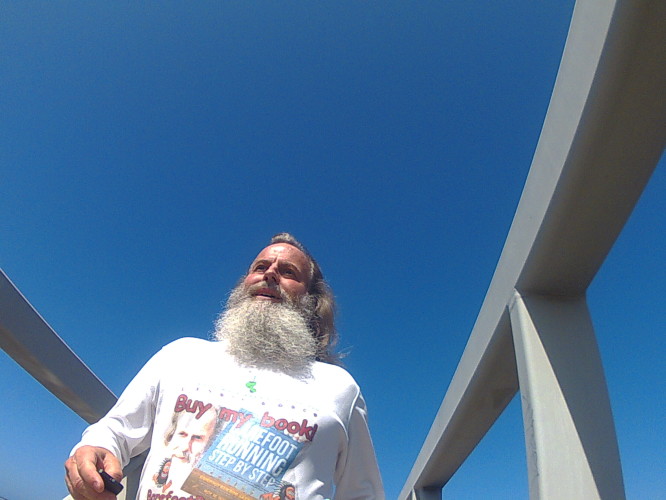
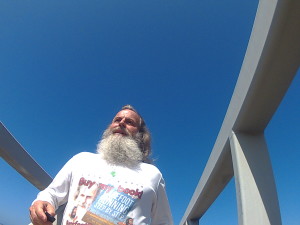
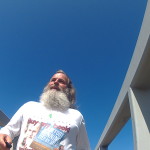

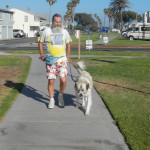
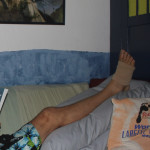
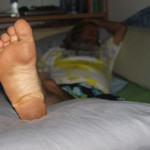
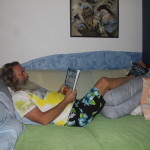
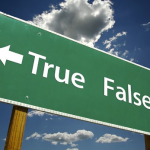
A comment about the shoes. They are New Balance Men’s MW577 Walking Shoes. I thought they might provide a bit of support and protection, but they were so unstable that staying balanced required significantly more effort, and by the time I finished walking less than a quarter mile, my feet, ankles, calves, legs, etc., were more tired and sore than when I walked in my bare feet a full mile, the day before. They have been returned to the vendor after only a single outing.
The sad part is that these are the kind of shoes that are sold to elderly people, who are even more likely to lose balance (due to the instability of the soft squishy soles), and possibly fall down and break something (or even kill themselves, if they land really badly). I was thinking about giving these to my uncle, but I don’t want to handicap or kill him.
Sorry to hear of your injury, Ken Bob. And, thank you for your detailed post. I’m learning from you even when you can’t run. Take your time; here’s hoping for a full recovery.
Thanks Christian, Foot is doing pretty good. Still not ready for “real” race speeds, but ran 6 miles last Saturday (rested the following day). I’ll write an update to my reports soon.
Hi Ken Bob
I’m glad to hear your foot is getting better. Coincidently, I also broke a metatarsal 4 weeks ago, so I thought I’d share my story.
I have been a barefoot enthusiast for a while (inspired by you) and have become pretty proficient without shoes. Able to beat all of my shod PBs and working my barefoot distance up to half marathon. 4 weeks ago I was running in a 5k race on smooth tarmac, when I felt a pain in my foot half way round, not a massive pain, but enough to make a slight limp. I didn’t think it serious, so I finished the race. But afterwards my foot was quite swollen over the metatarsals, and very tender to bear weight. Also an odd bruise developed at the bottom of the second toe.
A trip to the xray the next day confirmed a clear break through the 2nd metatarsal, at the ankle end. And the doctor explained that the odd bruise was a tell tale sign – because the blood from the break runs down the length of the bone and comes out at the first available aperture. He gave me a rigid boot to wear, and I’ve started walking without it for the 1st time today, 4 weeks later. So, recovery is well on the way, thankfully.
The ironic thing, is that I took up barefoot running for the reason (and I became very convinced of it), that barefoot running teaches better technique and helps to avoid injury. However “the irony”, is that my fracture was certainly caused by barefoot running. There was no sudden trauma which caused the break – it was simply a case of repeated impact on the same bone over and over again, until it finally broke. It is definitely true that running barefoot style diverts a lot of impact away from hips, knees and heels, thereby avoiding injury in those areas. But the downside of that, is that there is a significant impact on the balls of the feet, particularly when running on concrete or tarmac. This, repeated hard impact between the balls of my feet (i.e. the ends of my metatarsals) with hard ground, with only a thin layer of skin in between, caused the bone to eventually break.
No doubt, I should be learning to land more lightly, but in a race, running competitively, it’s hard to avoid hitting the ground quite hard.
I’m still convinced by the merits of barefoot running, but I’m going to adopt a new approach.
For any hard impact running i.e. races, or hill sprints – I need to wear shoes
For a few training runs per week – still good to do it barefoot, but avoiding concrete routes
I think i remember reading from you somewhere that you recommend running barefoot on the most unforgiving terrain, like gravel. I agree with this. A gravel path is nasty on the skin, but it absolutely prevents you from stamping your foot down, and teaches a light step. Whereas smooth concrete is totally fine on the skin, so it allows/encourages a stamping foot fall.
So you see, even with a broken foot from barefoot running, I’m still picking up on a few pearls of wisdom from you, Ken Bob.
Good luck with your own metatarsal recovery.
All the best
Cheers
Danny
Just a friendly warning that many people wearing shoes, perhaps even more frequently, also get stress fractures, and broken bones in their feet. As I tell my neighbors about breaking my foot (which I believe actually did happen in shoes, 24 years ago, and didn’t present a serious problem, because that was shortly before I began running exclusively barefoot – I had always done some of my running barefoot), I’m surprised how many had also broken their feet, while wearing shoes. It’s a very common injury, particularly in societies that wear shoes chronically (probably weakening the bones from lack of exercise).
P.S. my right foot – the broken one – is currently stronger than it was just before I broke it – of course it was weak then, and just about to break. My left foot, which has probably been compensating somewhat, even though I tried to be conscientious about over compensating, is suffering some muscular pain and cramping – which seems to pass shortly after I begin moving (walking or running). So I’m pretty much recovered… I think… I hope.